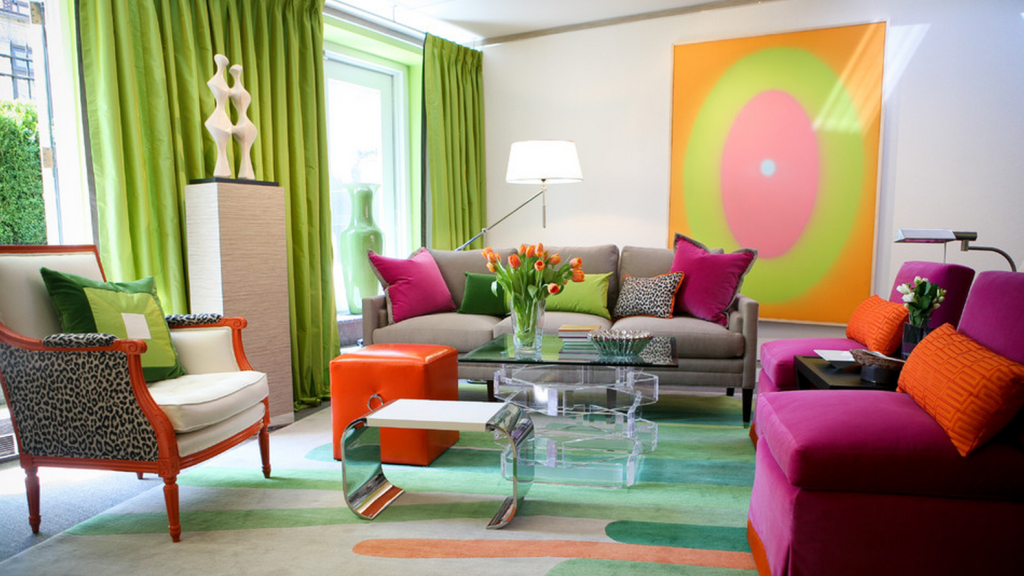The world of interior design is constantly evolving, with trends that reflect our changing lifestyles and desires. One such trend that has been making waves is the Dopamine Decor trend. This intriguing concept goes beyond aesthetics; it focuses on creating spaces that ignite feelings of joy, contentment, and inspiration. In other words, it’s a design theme that aims to make your bedroom a sanctuary.
But how exactly can tenants achieve it? And what is the neuroscience behind the concept? This article explores the essence of the Dopamine Decor trend, exploring its design principles and the dos and Don’ts of decorating a rental home. So whether you’re a design enthusiast or simply looking to infuse more happiness into your living spaces, you should stick around till the end.
What is Dopamine Decor?
Dopamine Decor is an emerging interior design trend that draws inspiration from neuroscience to create spaces that evoke happiness, well-being, and positivity. The concept is rooted in the idea that the design of our surroundings can influence our mood and overall mental state.
Some key elements of Dopamine Decor include:
- Color Psychology: Using colors that elicit positive emotions, such as bright yellows, soothing blues, and vibrant greens.
- Natural Elements: Natural materials like wood, stone, and plants are a focal point in Dopamine Decor because they connect with the outdoors and promote a sense of tranquility.
- Functional Design: Another focal element of dopamine decor is using functional furniture. Greater utility and ergonomic furnishings enhance the comfort and usability of your space.
- Personalization: Dopamine decor highly encourages residents to infuse their personal touches and customization to make the space uniquely suited to the individual’s preferences and personality. Bay Property Management Group understands tenants must personalize their rental to improve tenant satisfaction.
- Art and Decor: Integrating art, decor, and accessories that resonate with the individual fosters a sense of joy and inspiration.
- Optimizing Lighting: Leveraging natural light and incorporating lighting solutions that mimic natural sunlight to boost mood and energy levels.
- Decluttering: Embracing minimalist principles to reduce clutter and create a clean, organized environment that promotes mental clarity.
Do’s and Don’ts of Decorating a Rental Home
Do’s
-
Seek Permission
Always seek permission from your landlord before making any significant alterations or installations. Discussing your decorating plans and obtaining written approval, if necessary, ensures you stay within the terms of your lease. It also lowers the chances of a dispute or the risk of losing your security deposit.
-
Use Temporary Decor
Opt for rental-friendly decor with more temporary solutions like removable wallpaper, peel-and-stick tiles, and non-permanent adhesive hooks. These allow you to add personality to your space without causing damage or violating your lease agreement.
-
Invest in Portable and Personal Items
Choose furniture, decor, and accessories you can take when you move. Investing in portable items ensures you enjoy fittings in your current and future homes. After all, the last thing you want is to leave behind a valuable piece of decor when it’s time to relocate.
Don’ts
-
Carry Out Permanent Changes
Refrain from making permanent alterations. Changes such as painting walls, installing built-in shelving, or making structural changes are not only costly, they can lead to the loss of your security deposit. So, if you don’t receive explicit written consent from your landlord to make such alterations, don’t risk a lease violation.
-
Throw Away Furnishing
Avoid throwing away pre-installed furniture that may come with your rental. Just because your landlord permits you to personalize your space doesn’t mean you can toss whatever you don’t like. Before getting rid of anything, ask the property owner where to store the items you plan to remove.
-
Overcrowd or Clutter
Avoid overdecorating or cluttering your rental space. Excessive decor can make the room feel cramped and may lead to damage or unnecessary wear and tear. Instead, Maintain a balanced and organized environment that’s on par with the dopamine decor.
Importance of Notifying Your Landlord Before Decorating
-
Lease Compliance
Most rental agreements include clauses that specify the tenant’s responsibilities and restrictions regarding property alterations. Notifying your landlord demonstrates your commitment to complying with the lease terms, helping you avoid potential disputes or lease violations.
-
Preventing Damage
Some decorating projects, especially those involving wall fixtures, paint, or heavy items, can inadvertently cause damage to the property. When you inform your landlord, they can advise on suitable methods or materials to minimize the risk of damage.
-
Protecting Your Security Deposit
Failure to notify your landlord about decorating changes could result in deductions from your security deposit if the changes are not in line with the lease agreement. Informing the property owner or manager gives them time to inspect before your remodel to confirm there is no damage before or after. Thus, proper communication helps safeguard your deposit.
-
Building a Positive Relationship
Finally, open and respectful communication with your landlord fosters a positive tenant-landlord relationship. It demonstrates consideration for their property and can make future interactions more amicable.
Conclusion
The Dopamine Decor trend aims to create spaces that not only look aesthetically pleasing but also actively contribute to the well-being and happiness of the occupants. It’s a design philosophy that emphasizes the powerful connection between our surroundings and our emotional state. Using portable, personal, and temporary decor, you can hop on this trend to make your space your own.
However, ask your landlord for permission and avoid making permanent alterations. This approach helps you avoid potential lease violations and security deposit deductions and fosters a positive relationship with your landlord. Additionally, notifying your landlord before decorating is a responsible practice that aligns with legal requirements and ensures property maintenance.



